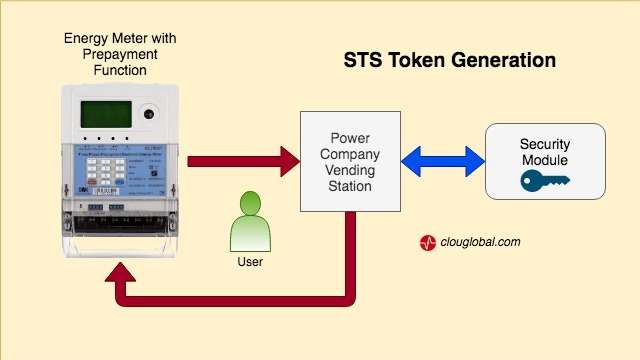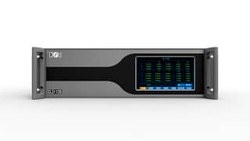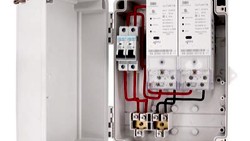Prepayment energy meters are a type of electricity meter that can be loaded with credit before giving access to energy to consumers. In this metering system, consumers prepay for the amount of electricity that they want to use by purchasing a card, token, or key, which is then used to add credit to their meter. The cost of the energy consumed is deducted directly from the credit loaded, with the user receiving alerts when their credit is running low. The meter disconnects when all credit is used.
History of Prepayment Energy Meters
Prepayment meters for electrical energy have been in use for over a century. The first prepayment meter was introduced in the year 1907 by the British company Kirkcaldy Corporation in 1907 (later overtaken by Ferranti). The device was called a "coin-in-slot" meter, and it required customers to insert coins into the meter to pay for their electricity. This early prepayment meter was unreliable, subject to theft of coins, and it was quickly replaced by more advanced models.
Throughout the 20th century, prepayment meters continued to be developed and improved by using different kinds of keys, tokens and card-readers. All in common was a proprietary solution, owned by manufacturers or utilities.
In the year 1997, the STS (Standard Transfer Specification) Association was formed as an international non-profit organization with the objective of developing a global standard for prepaid metering systems. The organization was founded by a group of leading prepaid meter manufacturers who recognized the need for a standardized communication protocol to enable interoperability between different systems.
Meanwhile, STS is an international industry standard described in IEC 62055-41, -51 and -52.

The system is based on issuing 20-digit tokens. These tokens are generated in the individual utility security modules and are encrypted by the utility key. This makes the whole vending- and token issuing system secure.
The STS protocol is used in more than 50 countries across the world and has been designed to ensure security and interoperability of prepayment solutions. The STS standard helps to ensure that prepayment energy meters are easy to install, maintain, and use across different manufacturers, making it easier for consumers to switch between energy suppliers.
What are the Advantages of Prepayment Meters
Prepayment energy meters have several advantages, both for the consumers and utilities. For consumers, prepayment meters can help them manage their energy costs by allowing them to pay for their electricity and gas in small instalments rather than receiving a large bill at the end of each month. This can be particularly beneficial for low-income households or those on a tight budget, as it helps them to budget and prevent debt.
Another advantage is that prepayment meters encourage energy efficiency. With a prepayment meter, customers can see the cost of their energy usage in real-time, allowing them to adjust their behaviour in a way that helps them to use less energy and hence save money. This can lead to significant savings for the consumer as well as reduced energy consumption and carbon emissions.
For utilities, prepayment meters can be beneficial by reducing the cost of billing and customer service. This is because prepayment meters automate the billing process, meaning that utilities do not need to send as many personnel to read meters and produce bills. Overall, prepayment energy meters are an efficient and effective way to manage energy consumption and costs for both consumers and utilities.

We are always working on innovative solutions.
Are there any back draws?
While prepayment electricity energy meters offer several benefits, there are also some drawbacks associated with their use. One of the main concerns is that prepayment meters can be more expensive to operate compared to traditional post-payment meters. This is because they require a communication network to facilitate the remote top-up of credit, as well as maintenance and management costs.
Another potential issue is that prepayment meters may decrease energy affordability for low-income households. As prepayment meters require customers to pay for their energy upfront, those on tight budgets may be unable to pay for enough energy credit to keep their homes heated, lit or powered, leading to energy poverty.
Furthermore, prepayment meters have been criticized for lacking transparency in pricing, leading to increased energy costs for customers. Sometimes, suppliers charge higher rates for energy on prepayment tariffs than standard credit tariffs.
Overall, while prepayment energy meters offer benefits, there are potential drawbacks that must be carefully evaluated before implementation to ensure the affordability and fairness of the energy market for consumers.
What are the Main Regions for Prepaid Energy Meters?
Prepayment energy meters have become increasingly popular in many countries around the world. However, the exact number of countries using prepayment meters is not easily ascertainable, as there is limited published data on the subject.
In Europe, prepayment energy meters are widely used in countries such as the UK and Ireland. They are also used in some Eastern European countries, such as Bulgaria and Romania. In Africa, prepayment meters are widespread in countries like Kenya, South Africa, and Nigeria, where they have been implemented to improve revenue collection and reduce energy theft.
In Asia, prepayment meters are used in countries such as India, Indonesia, and Malaysia. In Latin America, the use of prepayment meters is increasing in countries like Mexico, Brazil, and Argentina.
Overall, the use of prepayment energy meters has been growing rapidly in recent years due to their numerous benefits.
What is the Future of Prepaid Metering?
The future of prepayment energy meters is likely to be shaped by ongoing changes in the energy industry, including advances in smart grid technology, and evolving customer expectations. One of the most significant advancements in prepayment meter technology is the integration of smart technology. Smart prepayment meters offer greater energy-saving opportunities, with the introduction of more intelligent energy management systems that can automatically adjust energy consumption to optimize savings.
Another potential future development is the use of blockchain technology. Blockchain could enable consumers to purchase and transfer energy credits securely and without intermediaries, reducing costs and increasing transparency. There is also an increasing focus on improving the customer experience when it comes to prepayment meters. Utilities are developing services to enable customers to top up credit easily and conveniently, whether through mobile apps, smart speakers, or other digital tools.
This will improve customer satisfaction and also help to reduce operational costs for utilities.
Takeaway
Overall, prepayment energy meters are likely to remain an important tool for utilities to encourage energy efficiency and manage revenue collection. While there are some challenges with the technology, there are likely to be ongoing advancements in both prepayment energy meters themselves and in supporting technologies that make them even more effective and convenient for customers.
Our energy service platform CLOUESP has a module for online-vending, strictly working on the STS system, based on the latest edition. If you have not prepared your vending for the upcoming token identifier TID rollover, or if you are looking for an advanced system, it's a good time to talk to us.
Editor's note: This article was originally published in April 2023 and has been updated for comprehensiveness.





All comments are moderated before being published. Inappropriate or off-topic comments may not be approved.